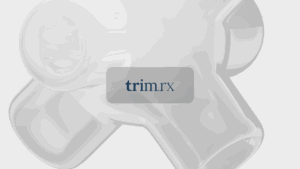What Diet to Follow on Ozempic: A Comprehensive Guide

Introduction
Weight loss can feel like an uphill battle for many of us, often accompanied by a myriad of diets, fads, and conflicting information. Did you know that over 70% of adults in the United States are classified as overweight or obese? This statistic underscores the importance of effective weight management strategies, especially with the rise of innovative treatments like Ozempic. While Ozempic, a medication originally developed for managing blood sugar in individuals with type 2 diabetes, has garnered attention for its weight-loss capabilities, the success of this treatment is closely linked to dietary choices.
In this blog post, we will dive deep into what diet to follow while taking Ozempic, how to optimize your meals for maximum effectiveness, and why personalized nutrition is crucial in your weight loss journey. Our goal is to provide you with a well-rounded understanding of dietary practices that complement the use of Ozempic, ensuring that you can achieve sustainable weight loss while maintaining your overall health and well-being.
We’ll explore the best and worst foods to eat, practical meal planning tips, and strategies for managing potential side effects. By the end of this article, you’ll have a comprehensive roadmap to navigate your dietary choices while on Ozempic, empowering you to make informed decisions that align with your weight loss goals.
Understanding Ozempic
Ozempic, known generically as semaglutide, is a glucagon-like peptide-1 (GLP-1) receptor agonist. It works by mimicking the effects of a hormone in the body that regulates appetite and glucose metabolism. When you take Ozempic, it slows down gastric emptying, which leads to prolonged feelings of fullness and reduced hunger. This mechanism can help you eat less and support your weight loss efforts.
While Ozempic is primarily prescribed for people with type 2 diabetes, many individuals have found it beneficial for managing their weight as well. However, it’s essential to remember that while Ozempic can assist in weight loss, it should be used in conjunction with a balanced diet and healthy lifestyle for optimal results.
The Importance of Diet While Taking Ozempic
A well-balanced diet is crucial for anyone using Ozempic, as it can help mitigate some of the medication’s side effects and enhance its effectiveness. Although Ozempic helps with appetite suppression, it can also lead to gastrointestinal issues such as nausea, bloating, and constipation, especially if certain foods are consumed. Therefore, knowing what to eat and what to avoid while on this medication is vital for a smoother experience.
What You Will Learn
In this guide, we will cover:
- The ideal foods to include in your diet while taking Ozempic.
- Foods to avoid to minimize gastrointestinal discomfort.
- Meal planning strategies to ensure balanced nutrition.
- Tips for managing side effects associated with Ozempic.
- The role of professional support in your weight loss journey.
Foods to Include in Your Diet
When taking Ozempic, focusing on nutrient-dense foods that promote satiety and overall health is essential. Here are the key food groups to prioritize in your diet:
1. Lean Proteins
Protein is a critical component of a healthy diet and becomes even more important while on Ozempic. Consuming lean proteins can help maintain muscle mass, reduce hunger, and contribute to feelings of fullness. Aim to include a variety of these sources in your meals:
- Skinless chicken breast
- Lean cuts of beef or pork
- Fish and seafood (e.g., salmon, shrimp)
- Eggs
- Legumes (e.g., lentils, chickpeas)
- Tofu and tempeh
Tip: Try to eat your protein first at each meal. This strategy can help ensure you get enough protein before feeling full.
2. Non-Starchy Vegetables
Vegetables are packed with essential vitamins, minerals, and fiber. They can help fill you up without adding a lot of calories. Aim for a variety of colors and types to maximize nutrient intake:
- Spinach
- Kale
- Broccoli
- Bell peppers
- Zucchini
- Cauliflower
- Mushrooms
Tip: Fill half your plate with non-starchy vegetables to help manage your weight while ensuring you receive vital nutrients.
3. Whole Grains
Whole grains provide complex carbohydrates that digest slowly, helping to stabilize blood sugar levels and keep you feeling satisfied longer. Include these options in your diet:
- Quinoa
- Brown rice
- Oats
- Barley
- Whole grain bread and pasta
Tip: Look for whole grains that are minimally processed, as they retain more nutrients and fiber.
4. Healthy Fats
Incorporating healthy fats into your diet is important for overall health and can help you feel full. Focus on these sources:
- Avocado
- Nuts and seeds (e.g., almonds, chia seeds)
- Olive oil and other plant-based oils
- Fatty fish (e.g., mackerel, sardines)
Tip: Use healthy fats in moderation to avoid gastrointestinal discomfort while ensuring you get enough essential fatty acids.
5. Fruits
Fruits are a great source of vitamins, minerals, and fiber. However, it’s important to choose lower-sugar options when possible, especially if you’re sensitive to blood sugar spikes. Consider these fruits:
- Berries (e.g., strawberries, blueberries)
- Apples
- Pears
- Oranges
- Grapefruit
Tip: Limit fruit intake to 1-2 servings per day to manage sugar levels effectively.
Foods to Avoid
While on Ozempic, certain foods can exacerbate gastrointestinal issues or counteract the medication’s benefits. Here’s what to minimize or avoid:
1. High-Fat Foods
High-fat foods can slow digestion and worsen gastrointestinal symptoms. Limit or avoid:
- Fried foods (e.g., French fries, fried chicken)
- Fatty cuts of meat (e.g., bacon, sausage)
- Creamy sauces and dressings
- Full-fat dairy products
2. Sugary Foods and Beverages
Sugary foods can lead to blood sugar spikes and may counteract the effects of Ozempic. Avoid:
- Sweets (e.g., candy, cookies)
- Sugary drinks (e.g., soda, sweetened coffee)
- High-sugar breakfast cereals
3. Ultra-Processed Foods
These foods often contain additives and unhealthy fats that can be detrimental to your health. Limit:
- Fast food
- Packaged snacks (e.g., chips, crackers)
- Frozen meals with added sugars and preservatives
4. High-Starch Vegetables
While vegetables are generally healthy, some starchy options can spike blood sugar levels. Limit:
- Potatoes
- Corn
- Peas
5. Alcohol
While there is no direct interaction between alcohol and Ozempic, it can affect blood sugar levels and may worsen gastrointestinal symptoms. If you choose to drink, do so in moderation and monitor your blood sugar closely.
Meal Planning Tips
Having a structured meal plan can make it easier to choose the right foods while on Ozempic. Here are some tips for effective meal planning:
1. Create Balanced Meals
Aim for meals that include a source of protein, healthy fat, and plenty of vegetables. This balance will help you feel full and satisfied.
2. Prepare Meals in Advance
Meal prepping can save time and prevent impulsive food choices. Prepare meals and snacks ahead of time to have healthy options readily available.
3. Monitor Portion Sizes
Pay attention to portion sizes, especially with higher-calorie foods like nuts and oils. Using smaller plates can help control portions and prevent overeating.
4. Stay Hydrated
Drinking plenty of water is essential for overall health and can help reduce feelings of hunger. Aim for at least 8 cups (64 ounces) of water per day.
5. Keep a Food Diary
Tracking what you eat can provide valuable insights into your eating patterns and help you make healthier choices. Consider noting how certain foods affect your body and any side effects you experience.
Managing Side Effects
Gastrointestinal side effects can be a common concern for those taking Ozempic. Here are some strategies to manage these issues:
1. Eat Smaller, Frequent Meals
Instead of three large meals, consider eating smaller, more frequent meals throughout the day. This approach can help prevent nausea and discomfort.
2. Choose Bland Foods When Necessary
If you’re experiencing nausea, focus on bland, easy-to-digest foods such as toast, crackers, or rice. Avoid spicy or greasy foods that may irritate your stomach.
3. Stay Upright After Eating
Avoid lying down immediately after meals, as this can exacerbate symptoms like acid reflux and nausea. Staying upright can aid digestion.
4. Consult with Healthcare Professionals
If you experience persistent gastrointestinal issues, it’s essential to consult with your healthcare provider or a registered dietitian. They can help adjust your diet or medication dosage as needed.
The Role of Professional Support
At TrimRx, we understand that embarking on a weight loss journey can be challenging, especially when incorporating medications like Ozempic. Our personalized weight loss programs are designed to provide you with the support and guidance you need to succeed. By taking our free assessment quiz, you can determine your eligibility for our prescription weight loss medications and receive a tailored treatment plan.
Consider working with a registered dietitian who specializes in weight management. They can help you navigate dietary choices, create personalized meal plans, and support you throughout your journey.
Conclusion
Navigating the world of diet while taking Ozempic doesn’t have to be overwhelming. By focusing on a balanced diet rich in lean proteins, non-starchy vegetables, whole grains, healthy fats, and limited sugars, you can optimize your weight loss journey. Avoiding high-fat and sugary foods will help minimize gastrointestinal discomfort and enhance the effectiveness of the medication.
Remember, your journey is unique, and it’s essential to listen to your body as you make dietary changes. If you’re looking for additional support, consider taking our free assessment quiz to see if you qualify for our prescription weight loss medications. Together, we can work towards achieving your health goals and embracing a healthier lifestyle.
FAQ
What are the best foods to eat while on Ozempic?
The best foods include lean proteins, a variety of non-starchy vegetables, whole grains, healthy fats, and fruits.
How can I maximize my weight loss on Ozempic?
Combine the medication with a balanced diet, regular physical activity, and consistent monitoring of your dietary choices.
Can I eat pizza while on Ozempic?
You can enjoy pizza in moderation. Opt for thinner crusts, lower-fat cheese, and plenty of vegetable toppings for a healthier version.
Should I consult a dietitian while on Ozempic?
Working with a registered dietitian can provide personalized guidance and support, making it easier to navigate your dietary choices effectively.
How do I manage side effects from Ozempic?
Eat smaller, frequent meals, choose bland foods if you’re feeling nauseous, and consult your healthcare provider if you experience persistent issues.

Transforming Lives, One Step at a Time
Keep reading
Navigating Ozempic Dosing: Can You Take 1.5 mg of Ozempic?
Can you take 1.5 mg of Ozempic? Discover Ozempic’s standard doses, why 1.5 mg isn’t available, and the risks of deviating from prescribed dosages. Learn about safe, medically supervised weight loss.
Ozempic and Dialysis: Navigating Treatment for Kidney Health
Can you take Ozempic on dialysis? Explore the evidence, benefits for weight loss & glycemic control, and safety considerations for kidney health patients.
Can You Take Too Much Ozempic? Navigating Safe Dosing for Weight Management
Can you take too much Ozempic? Learn the critical risks of Ozempic overdose, common dosing errors, and how to ensure safe, effective use for weight management.
Can I Take Prednisone and Ozempic? Navigating Medications for Safe Weight Loss and Health
Can I take Prednisone and Ozempic together? Learn about potential drug interactions, managing blood sugar, and ensuring safe treatment. Get expert insights for your health.
Flying High with Your Health: Everything You Need to Know About Can I Take Ozempic on a Plane?
Wondering if you can take Ozempic on a plane? Get essential tips on storage, TSA rules, packing, and dosing to travel confidently with your GLP-1 medication.
Your Weight Loss Journey: Why Consider Ozempic and Personalized Care
Explore why take Ozempic for weight loss, its role in diabetes management, and how GLP-1 agonists work. Discover personalized medical weight loss solutions.
Considering Ozempic Without Diabetes? What Healthy Individuals Need to Know About Weight Loss Medications
Considering Ozempic without diabetes for weight loss? Understand its FDA-approved purpose, risks of off-label use, and safer alternatives like Wegovy and Zepbound for chronic weight management. Make informed decisions for your health.
Navigating Your Health Journey: Can You Take Steroids and Ozempic Together?
Can you take steroids and Ozempic together? Explore the interactions between corticosteroids, anabolic steroids, and GLP-1 agonists for safe weight management.
Is Ozempic Being Taken Off the Market? Navigating Your Weight Loss Journey with Confidence
Is Ozempic being taken off the market? Get the facts on Ozempic, compounded GLP-1s, FDA regulations, and safe weight loss options. Learn more now!






